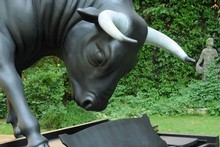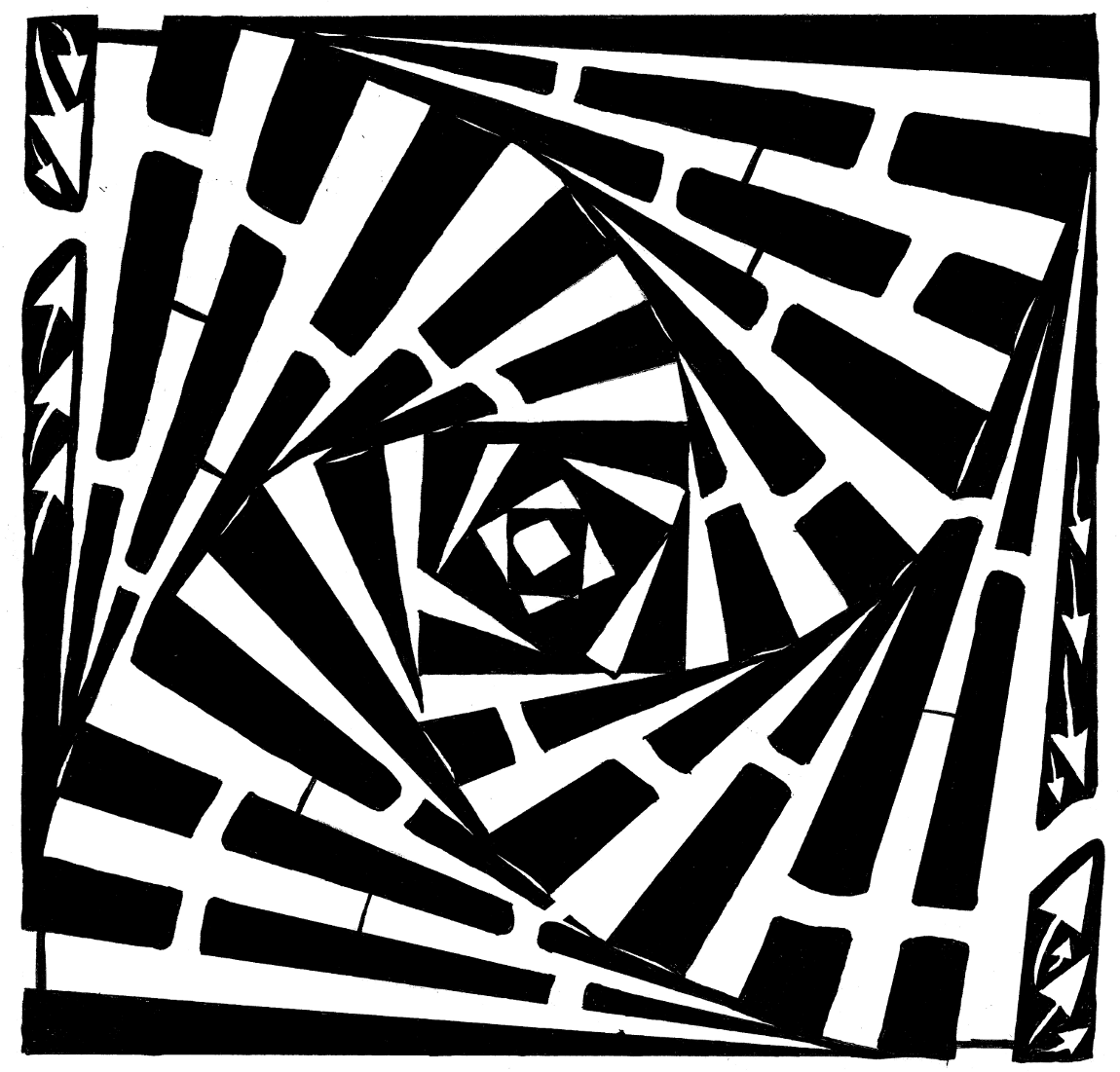New Zealand art is on display at the world’s greatest exhibition writes Liz Light, meanwhile, Josie McNaught gives a local's guide to Venice.

Michael Parekowhai's 'Chapman's Homer' at Venice Biennale. Photo / Supplied (click to view source)
Location doesn't get better than this. New Zealand's contribution to the Venice Biennale, the world's most important art event, is housed in the ground floor of a palace on the edge of the Grand Canal.
We take a vaporetto, a water taxi, and pass ancient palaces that string along the canal edge, tourists in gondolas and skiffs delivering groceries to locals. The boat scoots under the elegant arch of the Academy Bridge and pulls up at the palace dock.
It's just two steps into a small room filled with a grand piano on which an enormous bronze bull is reclining. I sit on the piano stool and the bull eyeballs me in an intimidating way.
Classical piano music wafts in from the next room. Here another grand piano, a Steinway, is completely covered in Maori carving and painted glossy bright red. It's being played beautifully and, though the room is large, music fills the space. The red carved piano is a culturally complex, surprising statement of quirky beauty.
In the adjoining private garden another piano has a bronze bull standing on top of it, glowering at its admirers. This bull, set among the greenery, looks more comfortable than his bronze colleague inside.
Michael Parekowhai, professor of fine arts at Auckland University and one of New Zealand's leading contemporary artists, created these large sculptured pieces. I don't pretend to understand them (the written explanation is complex and includes John Keats, Homer and story of a New Zealand river) but what's important is how they make me feel; impressed, awed, surprised and immensely proud to be a New Zealander.
Leaving the installation the back way, my friend Kath and I navigate down skinny alleys, along the edges of canals and over stone bridges. It's like exploring a maze with no landmarks. Getting lost in Venice is part of the joy of being there and in doing so we accidentally find a joint Taiwan and China exhibition (bright, funky and comic) and a pan-Arabia one (dark, sad and war-torn).
The Venice Biennale, the world's biggest and most prestigious art event, has been held every second year since 1903. This year, 89 nations and 83 selected artists of global significance are represented. It is vast but well organised and easy to see, and cheap. Many exhibitions are free and the rest are covered by a €20 two-day ticket.
Most of the exhibits are in two adjoining areas, the Arsenal (the old Navy dockyards) and Giardini, on the edge of large public gardens. We hot-foot to Arsenal and arrive when it opens. Over five hours we visit 52 exhibitions covering traditional art forms such as painting, printmaking and photography to avant-garde installations that include all sorts of things - artfully arranged refuse, whirring machines, collections of teapots and numerous audiovisual presentations.
This is a mind-blowing wash in art and creativity. We take time off at a cafe and, over good coffee and a boring panini, discuss what we have seen so far.
Personal favourites are delicate doodles of exquisite beauty from an Ethiopian artist, the perfectly carved statue of a man and a woman intertwined and ever so slowly melting from the flame of a burning candle, the skeins of dribbled wax adding to its beauty, and the simplicity of the Greek installation where, in a large room, a single shaft of white light reflects in water.
On our second day at the Biennale we make our way though 50 of the 70 or so exhibitions at Giardini before we decide we are arted-out and over it. It's inspirational, but glorious Venice is waiting and we haven't seen enough of it.
This city of 60,000 people is a living work of art. It has no roads, cars, trucks or scooters but is linked by 150 canals, 400 bridges and myriad little lanes. The buildings are hundreds of years old and are red, pink and pearly marble. The reflection of buildings and blue sky in the ever-present water is a kinetic masterpiece as beautiful as any in the Biennale. Being here feels like being in a shimmering, brightly coloured, timeless dream.
- Liz Light
A local's guide to Venice by Josie McNaught
One of Riccardo Polacco's greatest regrets is being born in Venice. "I would have liked to feel the sensation of a person who arrives in Venice for the first time in his life so as to feel the emotions this town arouses in one's heart," he says with a big sigh as we sip cool beer in the bar of his Hotel Atlanta Augustus on the Lido in Venice.
I had met Riccardo in Helensville, northwest of Auckland, in January. A hotel owner in Venice, he saw the town's Grand Hotel for sale on the internet and bought it to enhance the connection he feels to this country.
I have visited Venice many times for the Biennale but, watching the weary tourists plodding around the hot spots, I did wonder if there wasn't a tiny corner of the island that was truly for the locals. Polacco was my opportunity to find out.
He believes there is a way to enjoy this famous tourist trap without the tourist trappings. It's all about attitude.
"Take a few days and tick off the famous places - St Mark's Square, the Doge's Palace, the Basilica, the Academy of Fine Arts and other museums and churches. Get there early and avoid the queues, but realise these are the most popular places, so accept you are a tourist and play the game," he says.
"Once you have done landmarks, take some time to get lost in Venice's tortuous alleys and little squares without pointing to a fixed destination. One cannot really get lost in Venice. The worst that can happen is to be forced to go back on one's footsteps."
It is worth giving this a go ... Just keep walking away from the tourists. After just 10 minutes the throng starts to dissipate.
Polacco recommended the Jewish quarter, one of Venice's oldest areas. The shops are clear of tacky souvenirs and Murano glass and the food is kosher. The cafes don't advertise "Menu Turistico" and the only language you hear is Italian.
Because the Jewish ghetto wasn't allowed to spread out (it was locked each night) the buildings simply went up, and today some slump lopsidedly against each other in a precarious hodge-podge of bricks, shutters and balconies. It's one of those places where you can feel the history and imagine the people who lived and suffered there.
Near the ghetto is the Madonna dell'Orto, another good place to soak up genuine Venetian atmosphere, and for a quiet drink, Polacco recommends the Via Garibaldi, next to the Giardini (local gardens), home of the Biennale in the "Sestiere" quarter of Castello.
Napoleon demolished huge blocks of the Venetians' beloved narrow buildings and maze-like alleyways to create the gardens. They are maintained in the manner of someone who has had something foisted on them - grudgingly tidied, but not a great feature for garden enthusiasts.
Hunger pains can be satisfied by a visit to the Fish Market of Rialto and ready-made sea-fish snacks at Pronto Pesce, followed by a drink at Campo Santa Margherita.
We enjoyed large, delicious squares of pizza for €1.50 each ($2.80), spoiled for choice with toppings of wild mushrooms, anchovies and salami, as well as the classic Margherita.
If you fancy eating in one of the many cafes that spill on to Venice's busy and delightful campos, or squares, try Osteria L'Orto dei Mori in Campo dei Mori.
Crowds and the noise are something Venetians simply accept as the price to pay for living in such a popular place.
"Venice is one town that belongs to the world and the world belongs to the town. Sometimes it feels like all the world is here, there is so much energy and people," Polacco says, with just a hint of weariness.
Luckily for him, when the heat and the crowds get him down, he has the perfect bolt-hole tucked down at the bottom of the world - the Grand Hotel in Helensville, although sharing a beer with him there on his next visit won't have quite the same magic for me as it did in Venice.
Stacked and Swirled Boxed Illusion Maze

Awesome optical illusion maze of a stack of boxes stacked and swirled.
Maze entrance and exit are marked by arrows.
Can't solve it, check out the maze solution to stacked and swirled maze